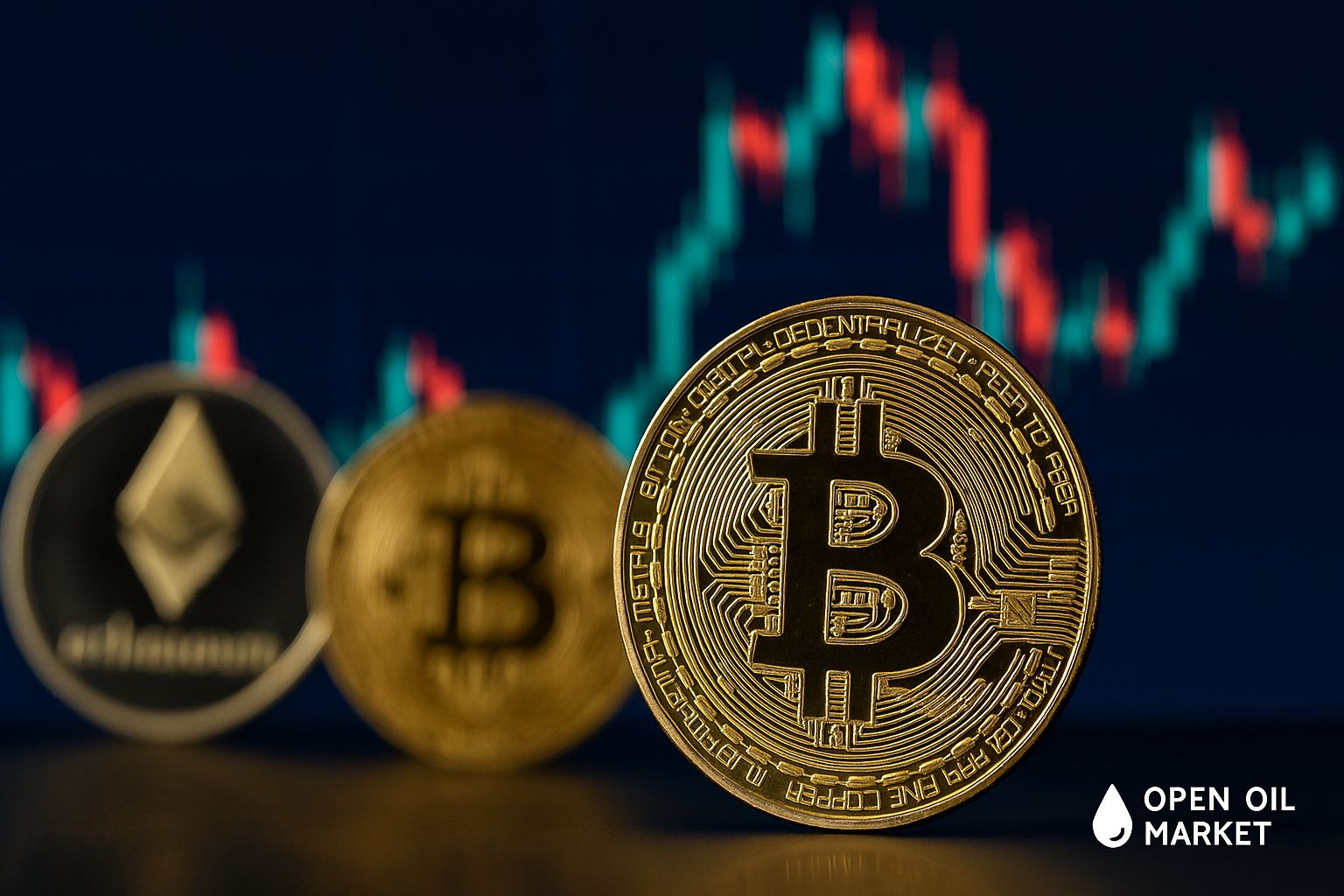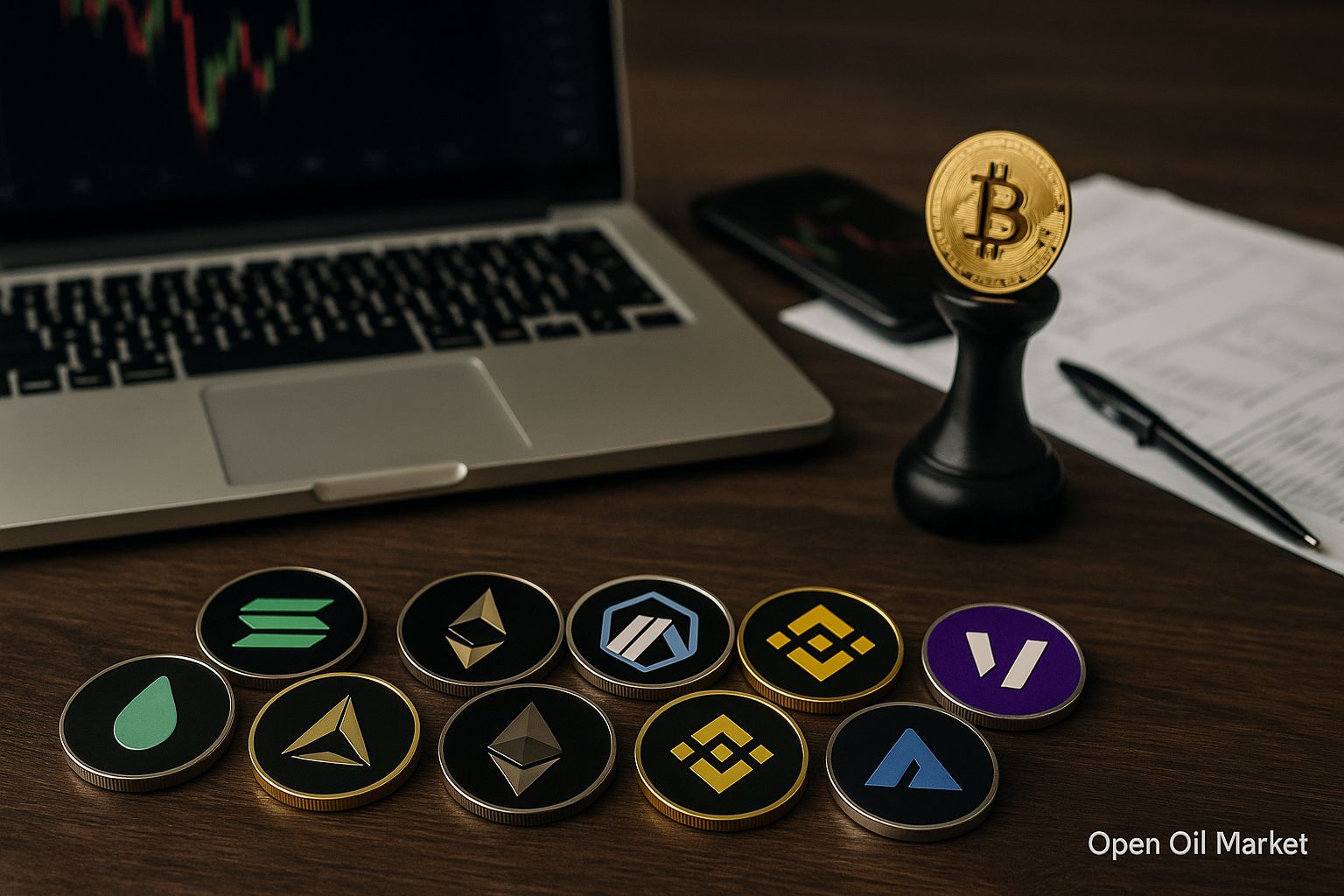
Current News in Startups and Venture Investments as of November 25, 2025: Mega Funds, Record AI Rounds, New Unicorns, VC Activity, and Key Events in the Asian Market.
By the end of November 2025, the global venture market is steadily recovering after the downturn of recent years. Investors worldwide are once again actively funding technology startups, resulting in record deals as major funds triumphantly enter the market with substantial capital. Consequently, significant funds are again flowing into the startup ecosystem, although investors continue to act selectively, focusing on the most quality projects.
The increase in activity spans nearly all regions. According to recent data, global venture capital investment reached approximately $97 billion in Q3 2025—a 38% increase compared to the previous year and slightly above the level of the previous quarter. This is the best quarterly result since 2021 and marks the fourth consecutive quarter of growth following the "venture winter" of 2022-2023. The primary contributors to this growth are mega rounds in artificial intelligence; however, funding increases are observed at all stages. Venture activity is rising in most corners of the world: the US maintains its leadership (with a particularly rapid growh in the AI segment), investment volumes in the Middle East have dramatically increased over the year, while in Europe, Germany has surpassed the UK in total venture capital for the first time in a decade. In Asia, the situation is uneven: India, Southeast Asia, and the Gulf countries are attracting record capital flows amid a relative decline in activity in China. New tech hubs are also developing in Latin America and Africa. The global market is gaining strength, although participants remain cautious and selective.
Below are key events and trends shaping the venture market as of November 25, 2025:
- Return of mega funds and large investors. Leading venture players are forming record funds and increasing investments, once again flooding the market with capital and raising their risk appetite.
- Record AI rounds and a new wave of "unicorns." Unprecedented investments in AI startups are inflating company valuations to unprecedented heights, leading to the emergence of numerous new "unicorns."
- Revitalization of the IPO market. Successful public debuts of tech companies and new listing applications indicate that the long-awaited "window" for public exits has reopened.
- Diversification of sector focus. Venture capital is flowing not only into AI but also into fintech, biotech, climate technologies, space, defense, and other projects.
- Wave of consolidation and M&A deals. Major mergers, acquisitions, and partnerships are reshaping the industry landscape, creating new opportunities for exits and business growth.
- Global expansion of venture capital. The investment boom is spreading to new regions—from the Middle East and South Asia to Africa and Latin America—creating new tech hubs.
- Asian market: growth outside of China. India and Southeast Asia are demonstrating record dynamics in venture investments, compensating for the relative cooling in China.
- Renewed interest in crypto startups. After a prolonged "crypto winter," blockchain projects are once again attracting significant investments and attention from funds.
Return of Mega Funds: Big Money is Back in the Game
The largest investment players are triumphantly returning to the venture arena, signaling a new wave of risk appetite. The Japanese conglomerate SoftBank, after several challenging years, announced the establishment of a third Vision Fund with a volume of approximately $40 billion, focused on projects in AI and robotics. At the same time, sovereign funds from the Gulf countries are significantly increasing their presence in the tech sector. Middle Eastern investors are pouring billions of dollars into promising startups worldwide and developing ambitious tech projects in their region. These mega funds inject liquidity into the market and are prepared to support innovations with large checks, setting the tone for a new round of tech growth. The return of big money from SoftBank, Middle Eastern funds, and other "sharks" in the market indicates a powerful influx of capital into the startup ecosystem and intensified competition for the most promising deals.
Record Investments in AI and a New Wave of "Unicorns"
The artificial intelligence sector is the primary driver of the venture upswing in 2025, demonstrating unprecedented volumes of financing. Global investments in AI startups are expected to exceed $200 billion by the end of the year. The combined valuation of the top ten companies in this sector has approached $1 trillion. Mega rounds in AI are setting new records—for instance, the startup Cursor raised about $2.3 billion (valued at ~$29 billion), marking one of the largest venture rounds in history and highlighting investor excitement. The industry continues to produce numerous new "unicorns," yet amidst such rapid growth, experts note the first signs of overheating in certain niches and call for a more measured approach.
IPO Market Revives: A New Wave of Public Offerings
The global IPO market is emerging from a prolonged lull and gaining momentum. Following a pause from 2022 to 2024, a revival of initial public offerings has emerged as a long-awaited exit path for venture investors. Several major "unicorns" successfully debuted on the stock market in 2025, reigniting investor appetite for new public companies. For example, the stablecoin issuer Circle conducted an IPO valued at around $7 billion, and the cryptocurrency exchange Bullish secured approximately $1.1 billion through its listing. These debuts confirm that investors are willing to support fintech and crypto companies in the public market.
Now, many players are keen to capitalize on the newly opened "window" of opportunity. According to insider information, the creator of ChatGPT—OpenAI—is considering an IPO as early as 2026, possibly with a valuation of up to $1 trillion. The improved market conditions and clearer regulatory requirements are providing confidence to startups planning to list. Experts predict that the number of high-profile tech IPOs will grow in the coming years as the "window" for exits remains open and the market favorably evaluates new companies.
Diversification of Investments: Beyond AI
In 2025, venture investments are covering an increasingly broader range of sectors and are no longer limited to artificial intelligence alone. Despite AI's dominance, significant funds are also directed toward other high-tech segments. For instance, healthcare and biotechnology attracted around $15 billion in venture capital in Q3 2025, second only to AI and IT infrastructure. Major rounds are showing synergy between technology and medicine—for example, the genomic medicine project Fireworks AI received $250 million for developing a platform at the intersection of AI and healthcare. Investors are also demonstrating heightened interest in climate and "green" innovations—from biodegradable materials made from algae to new components for electric vehicles, although the scale of such deals still falls short of the massive rounds in AI.
Increased attention is also being paid to fintech and hard tech sectors such as space and defense. Financial technologies are not being left behind: the European neobank Revolut was recently valued at approximately $75 billion in a recent round—confirming that investor interest extends to large fintech projects. Thus, the investment focus of venture capital has significantly broadened: in addition to AI, substantial investments are going to startups in finance, biomedicine, climate, and other innovative sectors.
Wave of Consolidation and M&A Deals: Market Consolidation
High valuations of startups and competition for promising markets are fueling a new wave of consolidation, reshaping the power dynamics within the industry. For example, in October 2025, investment bank Goldman Sachs announced the acquisition of venture firm Industry Ventures for approximately $1 billion. This deal became one of the largest in the venture sector and reflects the growing interest of banks in startup assets. Consolidation is also affecting the crypto industry, with traditional financial companies showing increased interest in acquiring blockchain startups. For instance, Mastercard is negotiating to acquire the infrastructure crypto project Zero Hash for approximately $1.5 to $2 billion, aiming to solidify its position in the digital asset space. The heightened activity of deals—from bank acquisitions of venture platforms to "mega-deals" in technology—indicates the "maturing" of the market and provides startups with more opportunities for successful exits and future growth.
Global Expansion: New Tech Hubs
The venture capital investment boom is spreading to new geographies, forming its own technology hubs around the world. The Middle East stands out particularly: sovereign funds from Gulf countries are directing unprecedented volumes of funds into technology companies while simultaneously developing ambitious mega-projects (such as the futuristic city NEOM in Saudi Arabia). As a result, funding for startups in the Middle East has multiplied in recent years, reflecting the region's shift towards economic diversification through innovation. Other regional shifts are also occurring: in Europe, Germany has surpassed the UK in total venture capital for the first time in a decade, while new startup ecosystems are also forming in Africa. Thus, innovation is no longer confined to Silicon Valley or other traditional centers—new growth points are emerging from the Middle East and South Asia to Africa and Latin America, granting startups access to capital worldwide and providing investors with new markets to seek promising projects.
Asian Landscape: India and Southeast Asia Offset Decline in China
In Asia, the venture market is developing unevenly. Amid a downturn in China due to stringent regulations and economic challenges, other parts of the region are experiencing an investment boom. India and Southeast Asia are attracting record amounts of capital: large deals are occurring weekly, new unicorns are emerging, and centers such as Bangalore, Singapore, and Jakarta are solidifying their positions on the global startup map. Thanks to the realignment of international funds towards these open and rapidly growing markets, the Asian continent remains a key driver of the global venture market as a whole.
Renaissance of Interest in Crypto Startups
After a prolonged "crypto winter," the market for blockchain startups is revitalizing, and investors are once again focusing on crypto projects. In the fall of 2025, funding for crypto startups reached its highest levels in recent years (in October alone, projects raised several billion dollars). The rise in digital asset prices is also fueling venture interest in the blockchain sector. In early November, Bitcoin surpassed the $100,000 mark for the first time (followed by a correction). Additionally, the anticipated approval of the first exchange-traded funds for Ethereum in the US is reducing regulatory uncertainty in the industry. Consequently, blockchain startups are once again receiving substantial investments from both specialized crypto funds and major institutional investors. This marks a new dawn for crypto investments following a downturn, although market participants remain cautious and selective to avoid a recurrence of past overheating.
Measured Optimism and Sustainable Growth
By the end of 2025, moderately optimistic sentiments have taken hold in the venture industry: successful IPOs and multi-billion rounds have demonstrated that the challenging period is behind us and that the market is once again ready for growth. Investors are gradually increasing their activity, but the lessons from the recent downturn are not forgotten—capital allocation is now more judicious, focusing on the sustainability of business models. This disciplined approach raises hopes that the new upswing will be of higher quality and stability, without overheating. Key players look to 2026 with cautious optimism, expecting further growth in investments and IPOs while maintaining heightened attention to risks.




